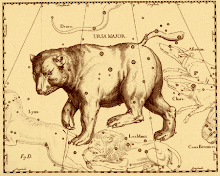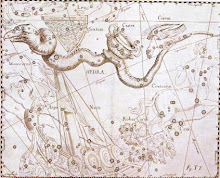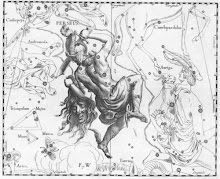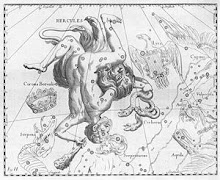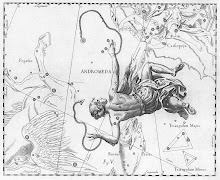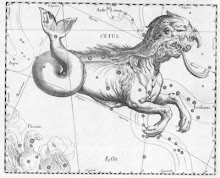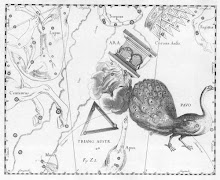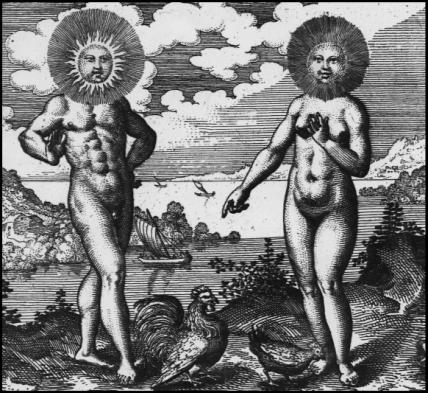Affichage des articles dont le libellé est PHILALETHES A Brief Guide to the Celestial Ruby. Afficher tous les articles
Affichage des articles dont le libellé est PHILALETHES A Brief Guide to the Celestial Ruby. Afficher tous les articles
PHILALETHES A Brief Guide to the Celestial Ruby.
A
BRIEF GUIDE TO
THE
CELESTIAL RUBY
By
Philalethes
(The Hermetic Museum, Vol. II, by Arthur Edward Waite, 1893)
Concerning the Philosopher's Stone and its Grand Arcanum.
THE Philosopher's Stone is a certain heavenly, spiritual, penetrative, and fixed substance, which brings all metals to the perfection of gold or silver (according to the quality of the Medicine), and that by natural methods, which yet in their effects transcend Nature.
It is prepared from one substance, with which the art of chemistry is conversant, to which nothing is added, from which nothing is taken away, except that its superfluities are removed. No one will question the utility of our Art, if he believes that it enables us to transmute base metals into gold. That base metals are capable of such transmutation is clear; Nature has destined them all to become gold, but they have not been perfectly matured. If, then, that which hinders their perfect digestion be removed, they will all become gold; for crude, cold, and moist Mercury is the common first substance of gold as well as of the other metals. Hence all other metals may be perfected into gold, by the aid of our Divine Magistery, which, being projected upon imperfect metals, has power to quicken the maturing process by as much as itself exceeds the standard maturity of gold. How patent, then, must the spiritual nature of our Stone be, which can effect more in one hour by a bare projection than Nature in the course of ages. If that substance which Nature supplies be taken in hand by Art, dissolved, coagulated, and digested, its perfection is increased from a monadic to a denary virtue; by repeating the same process, it is increased a hundred-fold, and then a thousand-fold, etc. This wonderful Medicine penetrates each smallest part of the base metals (in the proportion of 1 :: 1,000) and tinges them through and through with its own noble nature: your arithmetic will fail sooner than its all-prevailing power. Each smallest part that is pervaded with the vitalizing power of the-Elixir in its turn tinges that part which is nearest to it until the whole mass is leavened with its marvellous influence, and brought to the perfection of gold. This is done in a very short time, on account of the spiritual nature of the agent; it is the true metallic fire, and as a common fire warms even those parts of any object which are not in immediate contact with the fire, so this Elixir penetrates dissolved and melted metals in a moment of time — just in the same way as the virtue of leaven or yeast is brought to bear even upon those parts of the meal which it never reaches. A reproach is sometimes levelled at our Art, as though it claimed the power of creating gold; every attentive reader of our former tract will know that it only arrogates to itself the power of developing, through the removal of all defects and superfluities, the golden nature, which the baser metals possess in common with that highly-digested metallic substance.
Listen, then, while I make known to you the Grand Arcanum of this wonder-working Stone, which at the same time is not a stone, which exists in every man, and may be found in its own place at all times. The knowledge which I declare is not intended for the unworthy, and will not be understood by them. But to you who are earnest students of Nature, God will, at His own time, reveal this glorious secret.
I have shewn that the transmutation of metals is not a chimerical dream, but a sober possibility of Nature, who is perfectly capable of accomplishing it without the aid of magic; and that this possibility of metallic transmutation is founded upon the fact that all metals derive their origin from the same source as gold, and have only been hindered from attaining the same degree of maturity by certain impurities, which our Magistery is able to remove.
Let me tell you, then, what is the nature of this grand arcanum, which the Sages have called the Philosopher's Stone, but which is in every man, in every thing, at every season of the year, if it be sought in the right place.
It must consist of the elements, for they are the universal substance of all things, and as it is of a nature homogeneous with that of gold, it must be that which contains the qualities of all elements in such a combination as to render it incapable of being destroyed by fire.
It follows, then, that you must look for the substance of our Stone in the precious metals, since the required combination of elements is not found anywhere else. Those foolish sophists who seek it outside the domain of metals will never arrive at any satisfactory conclusion. For there is only one true principle, and nothing heterogeneous must be introduced into our Magistery.
For as a lion is always born of a lion, and a man of a man, so all things owe their birth to that which they are like; that which is combustible is derived from that which is combustible, that which is indestructible from that which is indestructible. Nor must we expect to find the principle which imparts the qualities of gold anywhere but in gold itself. If, indeed, we were able to create the sperm of things, we might hope to evolve this metallic principle from plants or animals which do not contain it; but that is the privilege of God alone. We must be content to dispose and develop the sperm which is made ready to our hands—new things we are unable to produce, and even if we could, our artificial seed would be no better than that which Nature has provided. If any one calling himself a Sage cannot use the things which are already created, it does not seem likely that he will be able to create new things out of heterogeneous substances—the seeds of metals out of herbs or animals.
Thus, you see that the Stone which is to be the transformer of metals into gold must be sought in the precious metals, in which it is enclosed and contained.
But why is it called a Stone, though it is not a stone; and how is it to be found? The Sages describe it as being a stone and not a stone; and the vulgar, who cannot imagine how so wonderful a thing should be produced except by art-magic, decry our science as impious, wicked, and diabolical. Some silly persons clamour for an Act making the profession or practice of this Art punishable by statute law. Now, one can hardly be angry with the illiterate and ignorant persons who raise this cry; but when it is taken up by men of exalted station and profound learning, one hardly knows what to say. These men I also reckon among the rude multitude, because they are deplorably ignorant of everything pertaining to our Art, and yet, forgetful of their dignity, they join in the hue and cry against it, like so many cowardly village curs. It is neither religious nor wise to judge that of which you know nothing; and yet that is exactly what these people do, who claim to be both Christians and scholars.
But let us return to the point from which we strayed. Some Alchemists who are in search of our Arcanum seek to prepare something of a solid nature, because they have heard the object of their search described as a Stone.
Know, then, that it is called a stone, not because it is like a stone, but only because, by virtue of its fixed nature, it resists the action of fire as successfully as any stone. In species it is gold, more pure than the purest; it is fixed and incombustible like a stone, but its appearance is that of very fine powder, impalpable to the touch, sweet to the taste, fragrant to the smell, in potency a most penetrative spirit, apparently dry and yet unctuous, and easily capable of tinging a plate of metal. It is justly called the Father of all miracles, containing as it does all the elements in such a way that none predominates, but all form a certain fifth essence; it is thus well called our gentle metallic fire. It has no name of its own; yet there is nothing in the whole world whose name it might not with perfect propriety bear. If we say that its nature is spiritual, it would be no more than the truth; if we described it is as corporeal, the expression would be equally correct; for it is subtle, penetrative, glorified, spiritual gold. It is the noblest of all created things after the rational soul, and has virtue to repair all defects both in animal and metallic bodies, by restoring them to the most exact and perfect temper; wherefore is it a spirit or quintessence.
But I must proceed to answer the second and more important part of my question. How is this Stone to be obtained? It does not exist in Nature, but has to be prepared by Art, in obedience to Nature's law. Its substance is in metals; but in form it differs widely from them, and in this sense the metals are not our Stone. For if we would elicit our Medicine from the precious metals, we must destroy the particular metallic form, without impairing its specific properties. The specific properties of the metal have their abode in its spiritual part, which resides in homogeneous water. Thus we must destroy the particular form of gold, and change it into its generic homogeneous water, in which the spirit of gold is preserved; this spirit afterwards restores the consistency of its water, and brings forth a new form (after the necessary putrefaction), a thousand times more perfect than the form of gold which it lost by being reincrudated.
It is necessary, then, to reduce metallic bodies to their homogeneous water which does not wet the hands, that from this water there may be generated a new metallic species which is nobler by far than any existing metal, viz., our Celestial Ruby.
The whole process which we employ closely resembles that followed by Nature in the bowels of the earth, except that it is much shorter. Nature produces the metals out of cold and humid Mercury by assiduous digestion; our Art takes the same crude, cold, and humid Mercury, and conjoins with it mature gold, by a secret artifice; the mixture represents a new and far more potent Mercury, which, by digestion, becomes not common gold, but one far more noble, which can transmute imperfect metals into true gold.
Thus, you see that though our Stone is made of gold alone, yet it is not common gold. In order to elicit our gold from common gold, the latter must be dissolved in our mineral water which does not wet the hands; this water is Mercury extracted from the red servant, and it is capable of accomplishing our work without any further trouble to the Artist. It is that one true, natural, first-substance, to which nothing is added, from which nothing is subtracted, except certain superfluities, which, however, it will cast off without any aid by its own inherent vital action. The chief object of your perseverant efforts should be the discovery of this Mercury, or the albefaction of our red Laton; all the rest is mere child's play, as the Artist has only to look on while Nature gradually matures his substance.
But remember that our albification is by no means an easy task. Gold which has been thus whitened can never resume its old form, for, instead of being corporeal and fixed, it is now spiritual and volatile. Concentrate your whole mind, therefore, on the whitening of the Laton. It is easier to make gold than thus to destroy its form; he who so dissolves it may be said rather to coagulate it—for dissolution of the body and coagulation of the spirit are coincident in it.
Consider these signs, ye sons of knowledge. That which dissolves is spirit; that which coagulates is body. A body cannot enter a body so as to cause dissolution; but a spirit can enter it, attenuate and rarefy it; and as you seek water, you need water to bring it to light; for every Agent has a tendency to assimilate to itself that which it acts upon, and every natural effect is conformed to the nature of the efficient; hence water is necessary if you would extract water from earth.
When I speak of water, I do not mean aquafortis, royal water, or any other corrosive whatsoever, for these waters, instead of dissolving metals, only corrode, mar, and corrupt them, without destroying their old form, to which task they are insufficient, as they are not of a metallic nature. No, our water is the water Mercury, which dissolves homogeneous metallic bodies, and mingles with them in indissoluble union, abides with them, is digested with them, and together with them becomes that spiritual whole which we seek. For everything that dissolves a substance naturally (still preserving the specific properties of the thing dissolved) becomes one with it both materially and formally, coalesces with it, and is thickened by it, thus nourishing it; as we see in the case of a grain of wheat, which, when dissolved by the humid earthy vapour, thereby takes up that vapour as its radical moisture, and grows together with it into a plant. We may also observe that, every natural dissolution being a quickening of that which was dead, this quickening can take place only through some vital agent which is of the same essence with the dead thing; if we wish to quicken the (dead) grain of wheat, we can do this only by means of an earthy vapour, which, like the grain itself, is a product of the earth. For this reason common Mercury can have no quickening effect on gold, because it is not of the same essence with it. A grain of wheat sown in marshy soil, so far from being quickened into life, is, on the contrary, destroyed, because the aqueous humour of the soil is not of the same nature. In like manner, gold, if mixed with common Mercury, or with anything except its own essential humour, is not dissolved, because such waters are too cold, crude, and impure; for which reason, being utterly unlike gold, they cannot amalgamate with it, or attain with it to a far nobler degree of development. Our Mercury, indeed, is cold and unmatured in comparison with gold; but it is pure, hot, and well-digested in respect of common Mercury, which resembles it only in whiteness and fluxibility. Our Mercury is, in fact, a pure water, clean, clear, bright, and resplendent, worthy of all admiration.
If you wish for a more particular description of our water, I am impelled by motives of charity to tell you that it is living, fluxible, clear, nitid, as white as snow, hot, humid, airy, vaporous, and digestive, and that gold melts in it like ice in warm water; moreover, that in it is contained the whole regimen of fire, and the sulphur which exists but does not predominate in it. This water is the true Keeper of our Gates, the Bath of the King and of his Queen, which warms them incessantly, but is not taken of their substance, and is distinct from the whitening substance of the water, though the two are united and appear under the same flowing form and colour. It is our vessel, our fire, the abode of our furnace, by whose continuous and gentle warmth the whole substance is digested. If you know this water, it will be seen to contain all our fires, all our proportions of weight, all our regimens. It is Bernard of Trevisa's clear pellucid Fountain, in which our King is cleansed and strengthened to overcome all his foes. All you have to do is to find this water and to put into it the purified body; out of the two Nature will then produce our Stone.
This mineral water can be extracted only from those things which contain it; and that thing from which it is most easily obtained is difficult to discover, as is also the mode of its extraction. It dissolves gold without violence, is friendly to it washes away its impurities, and is white, warm, and clear Without our Mercury, Alchemy could not be a science, but only a vain and empty pretence. If you can obtain it, you have the key of the whole work, with which you can open the most secret chambers of knowledge. Its nature is the same as that of gold, but its substance is different, and the preparation of it causes a great stench. Weigh well the possibilities of Nature; refrain from introducing any heterogeneous element into our Magistery, and do not blame me if you fail to understand my words. . . . Our Stone is produced from one thing, and four mercurial substances, of which one is mature; the others pure, but crude, two of them being extracted in a wonderful manner from their ore by means of the third. The four are amalgamated by the intervention of a gentle fire, and there subjected to coction day by day, until they all become one by natural (not manual) conjunction.
Afterwards, the fire being changed, these volatile substances should be fixed and digested by means of heat which becomes a little more powerful every day (i.e., by means of fixed and incombustible Sulphur of the same genus) until the whole compound attains the same essence, fixity, and colour.
There are twelve degrees or phases of this our process, which I may briefly enumerate and describe as follows. The first is Calcination.
Calcination is the first purgation of the Stone, the drying up of its humours, through its natural heat, which is stirred into vital action by the external heat of water—whereby the compound is converted into a black powder, which is yet unctuous, and retains its radical humour.
This calcination is performed for the purpose of rendering the substance viscous, spongy, and more easily penetrable; for gold in itself is highly fixed, and difficult of solution even in our water; but through this calcination it becomes soft and white, and we observe in it two natures, the fixed and the volatile, which we liken to two serpents. In order that a full dissolution may be made, there is need of contrition, that calcination may afterwards produce a viscous state, when it will be fit for dissolution.
When the substances are first mixed, they are at enmity with each other, by reason of their contrary qualities, for there is the heat and dryness of the Sulphur fiercely contending with the cold and moisture of the Mercury. They can only be reconciled in a medium which partakes of both natures, and the medium in which heat and cold are reconciled is dryness which can co-exist with both. Thus cold and heat are brought to dwell peaceably together in the dryness of the earth, and dryness and moisture in the coldness of the water. This reconciliation of contrary qualities is the second great object of our calcination.
Its sufficient cause is the action of the inward heat upon the moisture, whereby everything that resists it is converted into a very fine powder; the moving and instrumental cause is the fire contrary to Nature, which, being hidden in our solvent water, battles with its moisture and digests it into a viscous or unctuous powder.
This operation takes place before our dissolution, because whenever bodies are dissolved, the spirits in their turn are congealed. Again, the woman must reign, before she is overcome by the man. The dominion of the woman is in the water, and if the man overcome her in the element in which both her qualities of coldness and moisture inhere, he will easily conquer her where she has only one quality.
Calcination, then, is the beginning of the work, and without it there can be neither peaceable commixtion nor proper union. The first dealbation reduces the substance to its two principles, sulphur and quicksilver, the first of which is fixed, while the other is volatile. They are compared to two serpents, the fixed substance to a serpent without, and the volatile substance to a serpent with, wings. One serpent holds in his mouth the tail of the other, to shew that they are indissolubly conjoined by community of birth and destiny, and that our Art is accomplished through the joint working of this Mercurial Sulphur, and sulphureous Mercury. Hence the whole compound is at this stage called Rebis, because there are two substances but only one essence. They are not really two, but one and the same thing; the Sulphur is matured and well digested Mercury, the Mercury is crude and undigested Sulphur. It has already been said that in our Art we imitate Nature's method of producing metals in the bowels of the earth, except that our method is shorter and more subtle. In metallic veins only crude and frigid Mercury is found, in which the inward heat or dryness (i.e., Sulphur) can scarce make its influence felt. No digestive heat is found there, but in the course of ages an imperceptible motion changes this metallic principle. In the course of centuries, however, this imperceptible digestive heat changes the Mercury into what is then called fixed Sulphur, though before it was denominated Mercury.
But in our Art, we have something besides crude and frigid Mercury, viz., mature gold, with its manifold active qualities. These are united to the passive qualities of our Mercury; and so one aids and perfects the other, and as we have two fires, instead of the one slow inward fire of Mercury, the operation is more expeditious, and something far nobler than common gold is produced.
Thus you see that in our Art we have two Sulphurs and two Mercuries (i.e., Sulphur, and Mercury of Mercury, and Sulphur and Mercury of gold), but their only difference consists in degrees of perfection and maturity. Now, the perfect body of gold is reduced to its (two) first principles by means of our Divine water which does not wet the hands (viz., Mercury and Sulphur). This operation for a time gives the ascendancy to the female agent; but this being unnatural, the male agent soon reasserts itself, and by means of its heat dries up the moisture of the female agent, and—through calcination—converts it all into a most subtle and viscous powder, which powder is then changed by dissolution into a water, in which the spirits of the solvent and the thing dissolved, the male and the female principles, are mingled. But the inward heat, which has once been roused into action, still continues to work, separating the subtle (which floats on the surface) from the gross (which sinks to the bottom), until the man has gained the upper hand, the inseparable union takes place, and the male impregnates the female; the female brings forth a nebulous vapour, in which they are putrefied and decay, and from which both arise with a glorious body, no longer two, but only one by inseparable conjunction. This new birth is then coagulated, sublimed, nourished, and exalted to the highest degree of perfection, and may afterwards be indefinitely multiplied by fermentation, and used both for projection and as an Universal Medicine.
We see, then, that these black and fetid ashes are not to be despised, since they contain the Diadem of our King; your substance will never be white, if it has not first been black. It is by means of putrefaction and decay that it attains the glorified body of its resurrection. Therefore, you should honour the tomb of our King, for unless you do so, you will never behold him coming in his glory.
A great many students make a mistake at the very outset, by performing this calcination on a wrong substance—borax, or alum, or ink, or vitriol, or arsenic, or seeds, or plants, or wine, vinegar, urine, hair, blood, gum, resin, etc.; or they choose a false method, and corrode instead of calcining the metallic bodies on which they operate. Calcination can take place only by means of the inward heat of the body, assisted by friendly outward warmth; but calcination by means of a heterogeneous agent can only destroy the metallic nature, in so far as it has any effect at all. Every calcination of gold, which is not succeeded by a spontaneous dissolution, without laying on of hands, is also fallacious.
The true calcination is by means of Mercury, which (being added to gold in due proportions) softens and dissolves the gold, and, by its inward heat, united to outward heat, stirs into action the native heat of the gold, and thus causes it to dry up its humidity into that fine, viscous, black powder. And this is the true key of the work—to incrudate the mature by the conjunction of an immature—being incrudated to calcine it—being calcined to dissolve it—and all this philosophically, not vulgarly.
The outward signs of the calcination are as follows:—When the gold has become saturated with water, and the fire of the Mercury has called into play the heat of the bath, the water which was so brilliant begins to grow dim, then visibly swells and bubbles, until the whole becomes a fatty and viscous powder, which, however, still retains its radical humour. For when the heat first begins to operate, the cold and the moist seek refuge by rising to the top; thence they descend in liquid form and assimilate as much of the substance as they can to themselves; thus the powder is converted into a glutinous water. For between the different processes of our Art, there exists such a concatenation that not one can be produced or understood without the rest. In order to hide our meaning from the unworthy, we speak of several operations; but all these—the whole progress of the substance from black to white and red—should be philosophically understood as one operation, one thing, one successive disposition to black, white, and red.
The following rules should be observed if you wish to bring about true calcination:—
In the first place, you must procure our Mercury; common Mercury will produce no effect if you operate on it till doomsday.
Secondly, the external fire of the furnace should be neither too violent (in order that the equilibrium of chemical forces in the substance may not be disturbed), nor yet too gentle, so that the action of the inward fire may not languish for want of outward heat. It should be just such as to keep up an equable vital warmth.
In the third place, the Laton should receive neither too much nor too little to drink. If it receive too much, it will not be able to give it out, and a nebulous tempest will arise; if too little, it will be burnt to cinders. The activity of the Sulphur must dry up the superfluous humour of the Mercury; therefore, the active (sulphur) must not be swamped with too much sperm; nor must the moisture be choked with too much earth. The proportions should be between two or three parts of water to one of gold; but the larger the quantities of both substances, the more perfect will the calcination and dissolution be. The chief mistake against which you must guard is the swamping of your earth with water. For the earth contains the fire, which is the principal digestive in our Art.
In the fourth place, you should take care to seal up your vessel properly, to prevent the spirit from evaporating. Consider how carefully Nature has closed up the female womb to prevent anything from escaping or entering that might prove hurtful to the young life; and quite as much (if not more) care is required in our Magistery. For when the embryo is being formed, great winds arise, which must not be allowed to escape—or else our labour will have been all in vain.
The fifth requisite in our work is patience. You must not yield to despondency, or attempt to hasten the chemical process of dissolution. For if you do so by means of violent heat, the substance will be prematurely parched up into a red powder, and the active vital principle in it will become passive, being knocked on the head, as it were, with a hammer. But our true calcination preserves the radical humour in the body dissolved, and converts it into an unctuous black powder. Patience is, therefore, the great cardinal virtue in Alchemy. It must not be supposed that the signs and colours which I describe appear on the first day, or even within the first week: Bernard of Trevisa tells us that he waited in an anguish of expectation for forty days, and then returned and saw clouds and mists. You need the patience of the husbandman, who, after committing the seed to the earth, does not disturb the soil every day to see whether it is growing. . . . As soon as you have prepared your substance, i.e., mixed mature yellow sulphur with its crude white sulphur, put them in a vessel and let them stand undisturbed; at the end of twenty-four hours, the Mercury, which is attempting to rouse the latent fire of the sulphur, will begin to effervesce and send up bubbles. But little variation of colour shall appear until the object of the Mercury has been accomplished, and the Royal Bath prepared; at first it is the Mercury alone that is at work. When, however, the Bath has been made hot (i.e., the inward warmth of the gold roused) the greater part of our work is over, and we shall be easily able to distinguish the various operations. The first colour which appears after the silver colour of the amalgamated body, is not perfect blackness, but only a darkish white; the blackness becomes more pronounced day by day, until the substance assumes a brilliant black colour. This black is a sign that the dissolution is accomplished, which does not come about in one hour, but gradually, by a continuous process; for the Tincture which comes out of the Sun and Moon appears black to the eyes, but is insensibly and imperceptibly extracted. When the whole of the Tincture has been extracted from the body that is to be dissolved, the blackness is complete. The more you digest the substance at first, the more you subtilize the gross, and blacken the compound. There are four principal colours, the first of which is blackness; and it is of all colours the most tardy in making its appearance. But as soon as the highest degree of intense blackness has been reached (there being no idle intervals in our work), that colour begins little by little to yield to another. The time during which this blackness is developed is very long, and so is the time during which it disappears; but it is only for one moment that the blackness neither increases nor decreases: for things find rest only in that which is the end of their being, but blackness is not the end of our substance.
The advent of the blackness is like the coming of the night, which is preceded by a long twilight — when the last ray of light has faded away, the blackness of night has come; only our work is more tedious, and the change is, therefore, still less perceptible.
It may be objected that the black tincture begins to be extracted as soon as the inward heat is roused, and that, therefore, the colour which appears must be, from the very first, an intense black. My answer is that the Tincture which is extracted is, as a matter of fact, not black, but of a dazzling white; and that the blackness is produced gradually, through the action of the water on the body, out of which it draws the soul (the tincture), thus giving the body up to decomposition. It is this putrefaction (the result of the mutual action of the Sulphur and Mercury) which imparts to the Tincture its black colour; in itself the Tincture is brilliantly white. How long, then, will you have to wait till perfect blackness appears? Flamellus tells us that this intense blackness comes at the end of about forty days. Ripley advises us to let the mingled substances remain together for six weeks, until the conception has taken place, during which time the fire must be very gentle. And Bernard (of Trevisa) suggests the same thing, when he says in his parable: "The King doffs his glorious robes, and gives them to Saturn, who clothes him in a garment of black silk, which he retains for forty days." Of course, the blackness which is here spoken of is not equally intense all the time, as you will understand from what has been said above.
In the course of this change from white to black, the substance naturally passes through a variety of intermediate colours; but these colours (being more or less accidental) are not invariably the same, and depend very much on the original proportion in which the two substances are combined. In the second stage, during which the substance changes from black to white, it is already far purer, the colours are more lucid, and more to be depended upon. In the two phases there are intermediate colours; but in the first they are more dingy and obscure than in the second, and very much less numerous. In the progress of the substance from blackness to whiteness (i.e., the second phase of our Magistery), the most beautiful colours are seen in a variety such as eclipses the glory of the rainbow; before the perfection of blackness is reached, there are also some transition colours, such as black, azure, and yellow—and the meaning of these colours is that your substance is not yet completely decayed; while the body is dying, the colours are seen, until black night shrouds the whole horizon in pitchy gloom. But when the process of resurrection begins (in the second phase), the hues are more numerous and splendid, because the body is now beginning to be glorified, and has become pure and spiritual.
But in what order do the colours of which we speak appear? To this question no definite answer can be given, because in this first phase there are so much uncertainty and variation. But the colours will be the clearer and more distinct, the purer your water of life is. The four principal colours (white, black, white, red), always follow in the same order; but the order of the intermediate colours cannot be so certainly determined, and you ought to be content if within the first 40 days you get the black colour. There is only one caution you should bear in mind, in regard to this point: if a reddish colour appears before the black (especially if the substance begins to look dry and powdery at the same time), you may be almost sure that you have marred your substance by too violent a fire. You should be very careful, then, about the regulation of your fire; if the fire be just hot enough, but not too hot, the inward chemical action of our water will do the rest.
Our Solution, then, is the reducing of our Stone to its first matter, the manifestation of its essential liquid, and the extraction of natures from their profundity, which is finished by bringing them into a mineral water; nor is this operation easy: those who have tried can bear out the truth of my words.
Inscription à :
Commentaires (Atom)
LA LÉGENDE D'HIRAM

Articles les plus récents
LES SENTIERS D’HERMÈS






































